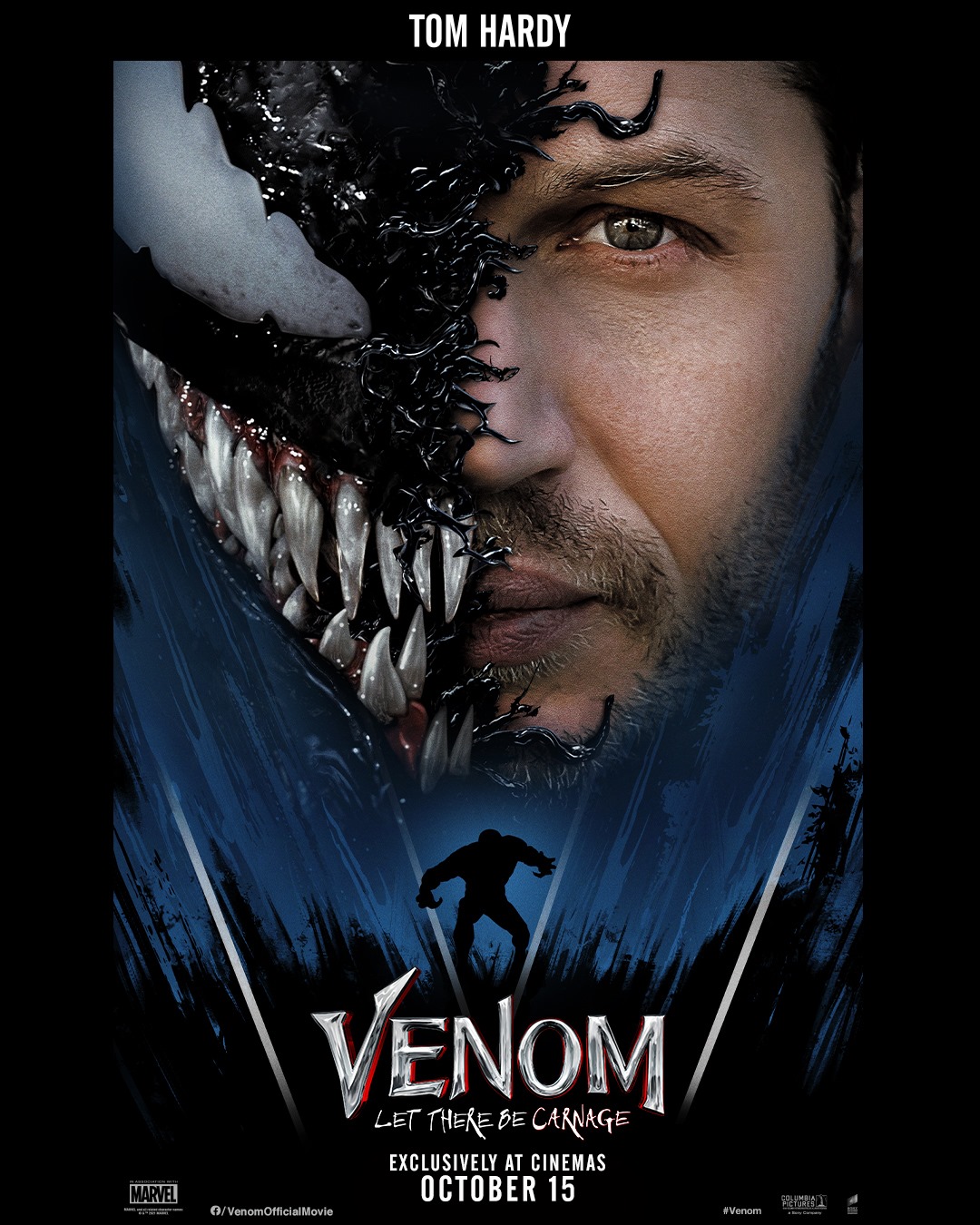
Film Critic Mia Lynam praises the performances in Venom, but highlights the problems of its shorter length and the impact this has on character development and pacing
Venom: Let There Be Carnage is the newest in the growing collection of Marvel movies, and the sequel to the first standalone Venom movie in 2018. Similarly to the first, Venom: Let There Be Carnage has Eddie Brock (Tom Hardy) and symbiote Venom fight against another alien creature, this time the titular character of Carnage, who fights from the body of serial killer Cletus Kasady (Woody Harrelson).
Having two strong leads almost pushes their brilliant performances to the side
Harrelson and Hardy are two bright stars in the Hollywood world, and that might be why all the other characters feel smaller by comparison. The Venom sequel features several other well known secondary characters (Michelle Williams, Naomie Harris, Reid Scott and Stephen Graham), and they all play quite strong characters; Scott proving a point of comedic access, Graham having another brilliant role within the force, Harris portraying a closed-off villain with skill and Williams expertly reprising her role from the first film as Anne. However, having two strong leads almost pushes their brilliant performances to the side, and we are not able to appreciate their performances as much as we should.

The pacing is faster than you would expect, with the runtime being around 90 minutes compared to Marvel’s usual over 2 hours. This meant the climax of the film felt rushed and somewhat forced, with no typical “final” boss battle – if the runtime was longer, this would have been improved by breaking up the last fight into more of a struggle: having the hero fail, but come back to fight again!
Carnage’s direction and backstory differs somewhat from the original storyline in the comics, having his character less focused on chaos and more on revenge – this change plays well into the film format, and suits Tom Hardy’s Venom better; it seems to parallel Brock and Venom’s relationship dynamic quite well. Given their struggle as a symbiotic relationship within the movie, the added pressure and dangers of staying apart joins well to the antagonist’s storyline.
The soundtrack is formed of quite a few different genres and whilst they suit the scene they are placed in, looking at it holistically, it does not click. The opening scene is a flashback displaying the antagonist’s origin, and features very October-appropriate, haunting horror music. This is fine, apart from the juxtaposed upbeat rap music, and then upbeat techno music. The last large sequence of the film (the “boss fight”) features heavily choral odes, with a lot of harmonising voices, bells, and religiously-associated tones. Again, they suit their own scenes, but having such a differing soundtrack within a relatively short film creates disjointed scenes that make the film feel somewhat clunky.
Success combined with technology development and a larger budget can create more realistic monsters
The CGI and special effects have definitely evolved since the first film was released in 2018, showing how success combined with technology development and a larger budget can create more realistic monsters and moments that have the audience gasping with disgust! With this development of visuals (most memorable being the slime that comes from Venom’s ‘skin’), we have the development of Venom’s vocabulary – something that makes sense considering the context of Venom and his developing knowledge as a symbiote, as (assumedly) the more time he spends on Earth, the more time he has to become accustomed to the way humans communicate. However, his witty one-liners that made the audience chuckle within the first movie have now evolved into a few monologues towards Eddie; this consolidates their developing relationship as the main protagonists, but can feel forced or a little long, given the fact that many of the scenes are so short. That is not to say that Venom’s punchy one-liners have disappeared from the second film, though! They just do not have the same effect considering he has more lines in Venom: Let There Be Carnage.

How far is Carnage a symbol of pure chaos?
The relationship between the antagonists is quite interesting, too: Cletus Kasady (Woody Harrelson) and Shriek (Naomie Harris) mostly bounce off of each other well, but the introduction of a third into their relationship, Carnage, does not seem to bode well and in the end causes some conflict within the later half of the film. This raises questions of morality within the two antagonists near the end – when is enough enough? And how far is Carnage a symbol of pure chaos?
The plot follows on quite well from where the first film left off, though how long I could not say. The start and ending of the film could come across to some of the audience as confusing – no spoilers, but the final few sentences of Eddie Brock were open-ended and not reflective of his attitude most of the film. Contextually, the film did well as both a sequel and as its own film, though it does have its flaws.
Verdict:
Venom: Let There Be Carnage is a successful sequel and does well to follow Marvel’s typical features. However, the runtime is short, which means pacing, character development and the overall tone feel forced; you may leave the cinema feeling disappointed. That being said, always remember that Marvel puts extra scenes at the end of the credits (if you like the excitement of the franchise, that is)!
7/10
Venom: Let There Be Carnage is out now in cinemas
For more Marvel blockbusters, check out these articles from Redbrick Film:
Comments